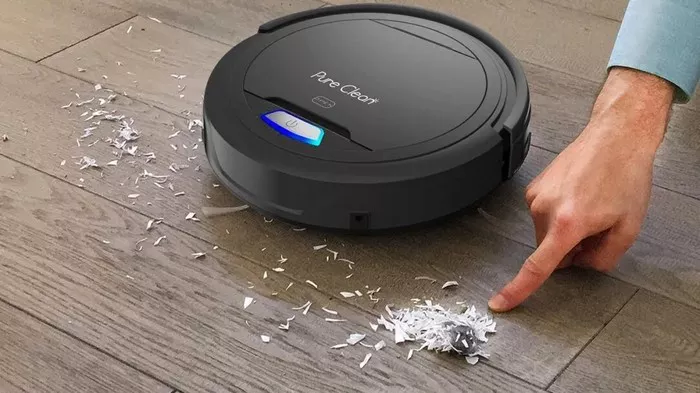Tiles are a popular choice for flooring in many homes and businesses due to their durability, versatility, and aesthetic appeal. However, cleaning tiles can sometimes be a challenge, especially when it comes to removing dirt, dust, and debris from grout lines and textured surfaces. One common cleaning tool that many people use on tiles is a vacuum cleaner. But just how effective are vacuum cleaners on tiles? In this comprehensive guide, we’ll explore the effectiveness of vacuum cleaners on tiles, the best practices for using them, and answer some frequently asked questions.
Understanding Tile Surfaces
Before delving into the effectiveness of vacuum cleaners on tiles, it’s essential to understand the different types of tile surfaces commonly found in homes and businesses:
1. Smooth Tiles: These tiles have a flat, smooth surface and are relatively easy to clean compared to textured tiles.
2. Textured Tiles: Textured tiles have uneven surfaces, which can trap dirt and make cleaning more challenging, especially in the grout lines.
3. Porcelain Tiles: Porcelain tiles are dense, durable, and resistant to water, making them a popular choice for bathrooms and kitchens.
4. Ceramic Tiles: Ceramic tiles are similar to porcelain tiles but are less dense and more porous, making them more prone to staining and water damage.
Effectiveness of Vacuum Cleaners on Tiles
Vacuum cleaners can be an effective tool for cleaning tiles, but their effectiveness can vary depending on several factors:
1. Type of Vacuum Cleaner: Some vacuum cleaners are specifically designed for hard floors, including tiles, while others may be more suitable for carpets. Choosing the right vacuum cleaner for your tiles can significantly impact its effectiveness.
2. Attachments and Accessories: Many vacuum cleaners come with various attachments and accessories designed for specific surfaces and cleaning tasks. Attachments such as crevice tools and brush attachments can be particularly useful for cleaning grout lines and textured tile surfaces.
3. Suction Power: The suction power of a vacuum cleaner plays a crucial role in its effectiveness on tiles. Higher suction power can help remove dirt and debris more effectively, especially from textured surfaces and grout lines.
4. Maintenance and Cleaning Frequency: Regular maintenance and cleaning of your vacuum cleaner, including emptying the dustbin or replacing the bag and cleaning or replacing filters, can ensure optimal performance on tiles.
Best Practices for Using Vacuum Cleaners on Tiles
To maximize the effectiveness of vacuum cleaners on tiles, consider the following best practices:
1. Choose the Right Vacuum Cleaner: Select a vacuum cleaner specifically designed for hard floors, with adjustable settings for different surfaces.
2. Use Attachments Appropriately: Utilize attachments such as crevice tools and brush attachments to effectively clean grout lines and textured surfaces.
3. Adjust Settings as Needed: Depending on the type of tiles and level of soiling, adjust the vacuum cleaner’s settings, including suction power and brush roll speed, for optimal cleaning results.
4. Clean Regularly: Vacuum your tiles regularly to prevent dirt, dust, and debris from accumulating, especially in high-traffic areas and around entryways.
5. Spot Clean Spills and Stains: Promptly clean up spills and stains on tiles to prevent them from setting and becoming more challenging to remove.
6. Consider Wet/Dry Vacuums: For tiles in areas prone to spills and moisture, such as bathrooms and kitchens, consider using a wet/dry vacuum cleaner for more thorough cleaning.
Conclusion
In conclusion, vacuum cleaners can be highly effective for cleaning tiles, provided they are used correctly and maintained regularly. By choosing the right vacuum cleaner, using appropriate attachments, adjusting settings as needed, and following best practices, you can ensure clean and pristine tiles in your home or business. Remember to vacuum regularly and address spills and stains promptly to maintain the beauty and longevity of your tile floors.
FAQs: Vacuum Cleaners on Tiles
Q1. Can I use a regular vacuum cleaner on tiles?
A1: Yes, you can use a regular vacuum cleaner on tiles, but it’s essential to ensure that it has adjustable settings for hard floors and comes with appropriate attachments for effective cleaning.
Q2. How often should I vacuum my tile floors?
A2: Ideally, you should vacuum your tile floors at least once a week to remove dirt, dust, and debris. However, high-traffic areas may require more frequent vacuuming to keep them clean.
Q3. Can vacuum cleaners damage tiles?
A3: When used correctly, vacuum cleaners should not damage tiles. However, using a vacuum cleaner with excessively high suction power or abrasive attachments could potentially scratch or damage delicate tile surfaces. Always follow the manufacturer’s recommendations and guidelines for your specific vacuum cleaner model.

